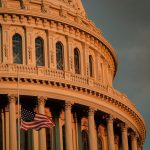Zohran Mamdani has doubled down on a centerpiece of his mayoral platform: a surtax on the so-called “wealthiest” New Yorkers. He’s openly argued that those earning more than $1 million can “afford to pay 2% more” to fund universal childcare, free buses and other left-wing giveaways, and he’s not shy about framing it as a fairness crusade. That frank admission should alarm anyone who believes in rewarding work and keeping this city competitive rather than turning it into a tax farm.
Dig into the numbers Mamdani’s camp is touting and the math looks deceptively simple: a 2 percent surtax applied above the $1 million threshold aimed at roughly 34,000 households and pitched to raise about $4 billion a year to bankroll his agenda. On paper that sounds like the rich paying their “fair share,” but those are campaign talking points — not sober forecasts about long-term behavior, investment, or the shrinking tax base that pays for police, sanitation, and schools. The left wants applause for targets and headlines; New Yorkers deserve a straight accounting of what happens after the applause dies.
What the political left tries to ignore is that New Yorkers don’t pay only a single city tax. Stack the federal, state and city levies and the top marginal bite in Gotham can approach — and in some calculations exceed — half of your income, a combined rate that pundits now peg near 52 percent for the highest earners. That’s not a theoretical abstraction; it’s a brutal disincentive that eats at entrepreneurship and drives take-home pay into a black hole of government spending. Voters ought to ask whether making New York the highest-taxed city in America is the path to rebuilding safety and opportunity or the recipe for sending the productive class packing.
Economists and tax experts have warned that layering surtaxes on top of already punishing combined marginal rates simply increases the incentives for high earners to shelter income, shift residency, or relocate businesses — none of which helps ordinary New Yorkers who rely on jobs, investment and a stable tax base. The Empire Center and other analysts have pointed out that when combined federal and local taxes cross the 50 percent line, the practical result is fewer paychecks, not more services. If Mamdani’s goal is to shrink inequality by shrinking the economy, his plan will succeed — just not in ways that benefit hardworking families.
Meanwhile, the financial community and skeptical observers are already sounding alarms about capital flight, business departures, and a hollowed-out municipal revenue stream that paradoxically could leave the city poorer and services worse. Wall Street’s reaction isn’t merely class sniping; it’s a warning from the very engines of jobs and philanthropy that keep New York afloat. If the mayor’s office becomes a bully pulpit for punitive taxation, the consequences will be felt in shuttered storefronts, stalled development, and fewer resources for law enforcement and basic city services.
Patriotic New Yorkers should demand a real plan that fixes quality of life and public safety without weaponizing tax policy against success. We can honor working people and raise opportunity by cutting waste, reforming pensions and procurement, streamlining services, and making the city friendly to small business — not by doubling down on class warfare that turns away the very people who fund schools and hospitals. The choice is simple: build a city that rewards industry and protects families, or elect leadership that punishes prosperity and leaves Main Street to pick up the pieces.




